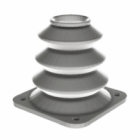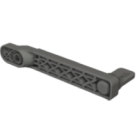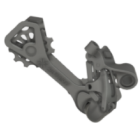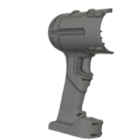3D printing: in-house vs outsourcing
As 3D printing becomes more accessible and capable, many businesses are faced with a strategic decision: should you invest in your own printer and run operations internally, or partner with an external service provider? There’s no universal answer — the right choice depends on your volume, goals, technical capacity, and how central additive manufacturing is to your product or process.
Below, we explore the core differences between these two approaches and help you evaluate which one aligns better with your current and future needs.
In-house 3D printing
Bringing 3D printing capabilities in-house means you own the hardware, control the workflow, and directly manage production. This setup is particularly attractive for teams that value rapid iteration, confidentiality, or want to build expertise internally.
Advantages:
| Challenges:
|
In-house printing works best when additive manufacturing is a core part of your development or production process, not just an occasional tool.
Outsourcing 3D printing
Outsourcing involves sending your digital files to a third-party service that handles everything — from printing to post-processing and delivery. This model works well when you need access to advanced technologies, specialty materials, or simply want to avoid operational overhead.
Advantages:
| Challenges:
|
Outsourcing is ideal when you print infrequently, require specialist capabilities, or are exploring additive manufacturing before committing to a full setup.
Which option is right for you?
Choosing between in-house and outsourced 3D printing comes down to two key questions:
- How often do you need to print?
- How critical is speed, confidentiality, or process control?
If you need rapid iteration, short feedback loops, and full ownership of the process, building in-house capabilities can be a powerful asset. If you prioritize flexibility, minimal risk, or access to industrial-grade results without the learning curve, outsourcing is often the smarter entry point.
Some companies opt for a hybrid model — keeping an in-house printer for prototypes or engineering tests, and outsourcing production parts or specialized materials to external partners.
Example scenarios: in-house vs outsourcing, cost and ROI considerations
| Scenario | Recommended approach | Rationale (cost & ROI impact) |
|---|---|---|
| A startup iterating on a product with daily design updates | In-house | Frequent use justifies printer cost quickly; lower per-part cost over time |
| A company printing one-off industrial prototypes every few weeks | Outsourcing | Low print volume doesn’t offset hardware investment; ROI not achievable short-term |
| An R&D lab running short print batches with variable geometries | In-house | Reduces per-iteration cost and turnaround time; higher ROI from accelerated product development |
| A marketing agency printing 3 large exhibition parts quarterly | Outsourcing | High outsourcing unit price is offset by savings on maintenance, training, and idle hardware |
| A business testing 3D printing before full-scale adoption | Outsourcing (initially) | Avoids premature capital expenditure; data-driven ROI assessment before scaling |
| A mid-size production company printing jigs and fixtures weekly | In-house | High repeat usage leads to fast ROI; supports just-in-time manufacturing and independence |
| A design studio with occasional client-specific models and color demands | Outsourcing | Access to advanced machines and finishes without tying up internal resources |
Explore also
- How to calculate 3D printing cost?
- Factors affecting print cost
- Is 3D printing cost-effective for production and prototyping?
- Is buying a 3D printer worth it in 2025?
- How much is 3D printing?
- Is 3D printing profitable?
- How to reduce 3D printing cost
- Do 3D printers use a lot of electricity?
Related categories
 Austria
Austria  Bosnia and Herzegovina
Bosnia and Herzegovina  Bulgaria
Bulgaria  Croatia
Croatia  Czech Republic
Czech Republic  Denmark
Denmark  Estonia
Estonia  Finland
Finland  France
France  Germany
Germany  Greece
Greece  Hungary
Hungary  Ireland
Ireland  Italy
Italy  Latvia
Latvia  Lithuania
Lithuania  Poland
Poland  Portugal
Portugal  Romania
Romania  Slovakia
Slovakia  Slovenia
Slovenia  Spain
Spain  Sweden
Sweden  Switzerland
Switzerland  United Kingdom
United Kingdom  Ukraine
Ukraine  China
China  Hong Kong
Hong Kong  India
India  Israel
Israel  Japan
Japan  Malaysia
Malaysia  Philippines
Philippines  Saudi Arabia
Saudi Arabia  South Korea
South Korea  Taiwan
Taiwan  Thailand
Thailand  Turkey
Turkey  United Arab Emirates
United Arab Emirates  Egypt
Egypt  South Africa
South Africa  Tunisia
Tunisia  Canada
Canada  Mexico
Mexico  United States
United States  Brasil
Brasil  Colombia
Colombia  Australia
Australia  New Zealand
New Zealand 












